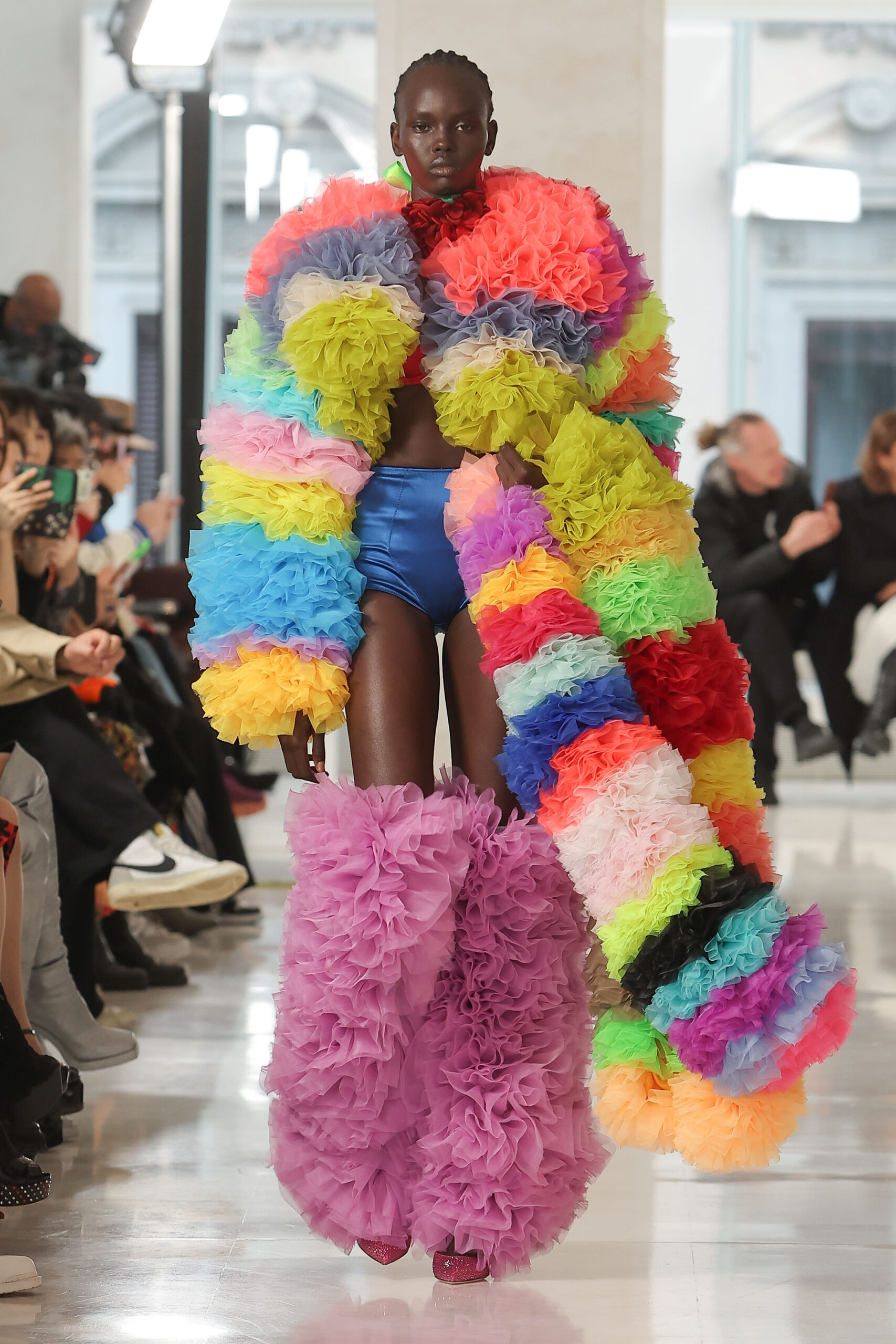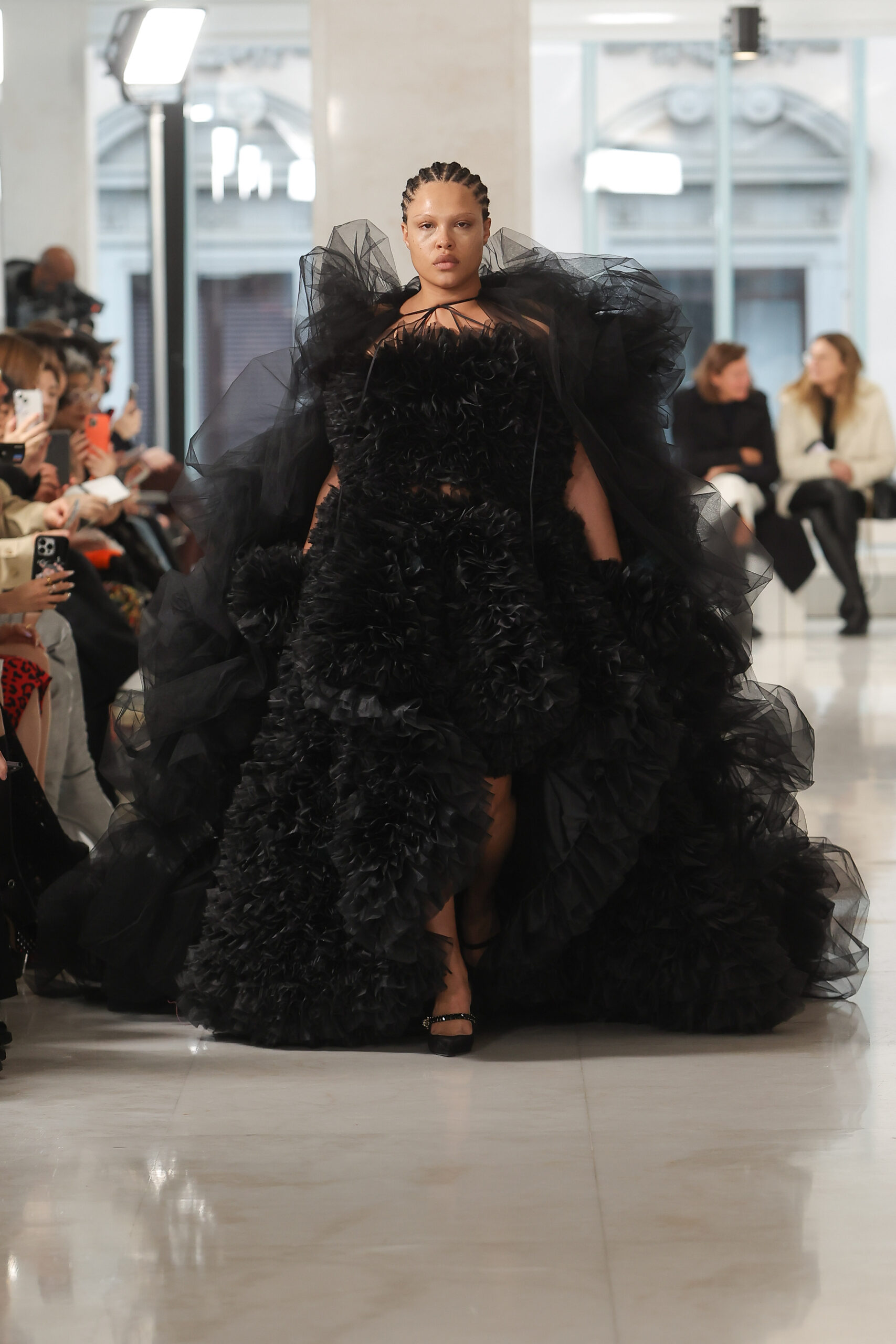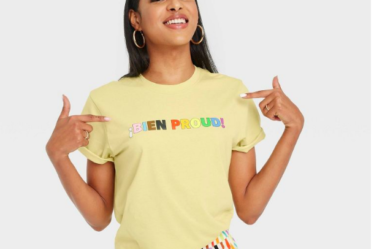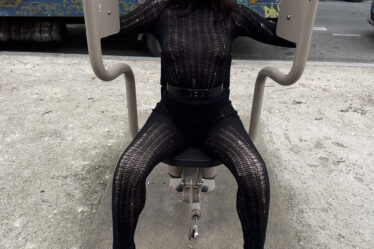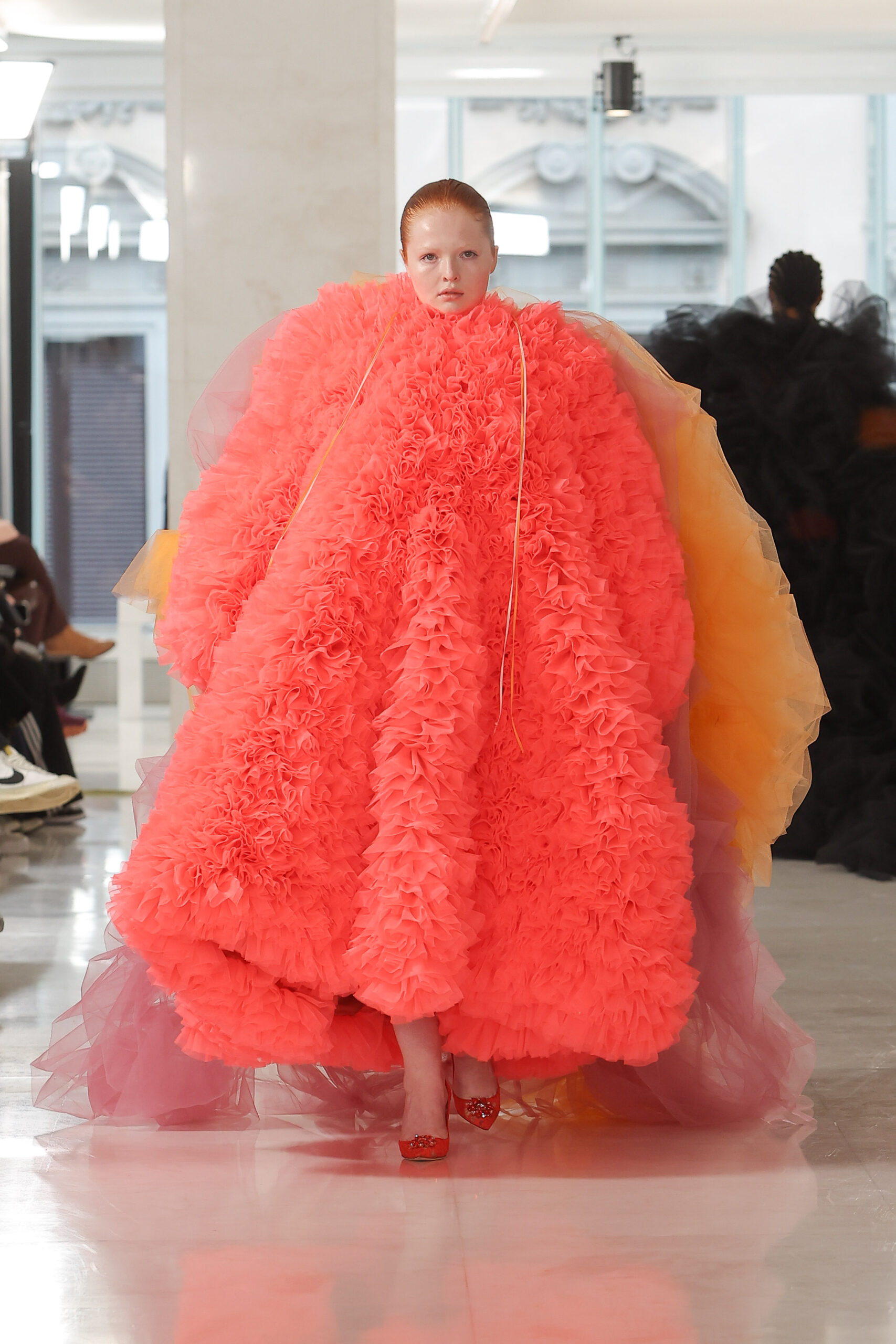
Domenico Dolce and Stefano Gabbana continue to support emerging talents
Domenico Dolce and Stefano Gabbana continue to support emerging talents
Beware of Tomo Koizumi! The 34-year-old Japanese designer might have just changed the way we think about fashion. With a collection of big (actually gigantic!) looks, Koizumi turned the runway into a rainbow of colors and ruffles, embracing the theatricality of fashion shows. His looks invite us to consume fashion through the eye – as if we were looking at a painting or a statue – rather than put them for commercial use. A new definition of haute couture appears to leave behind elitarian costs and shapes, encouraging the pursuit of fashion as a form of pure art. Is this what we might expect to see on the runways in the years to come?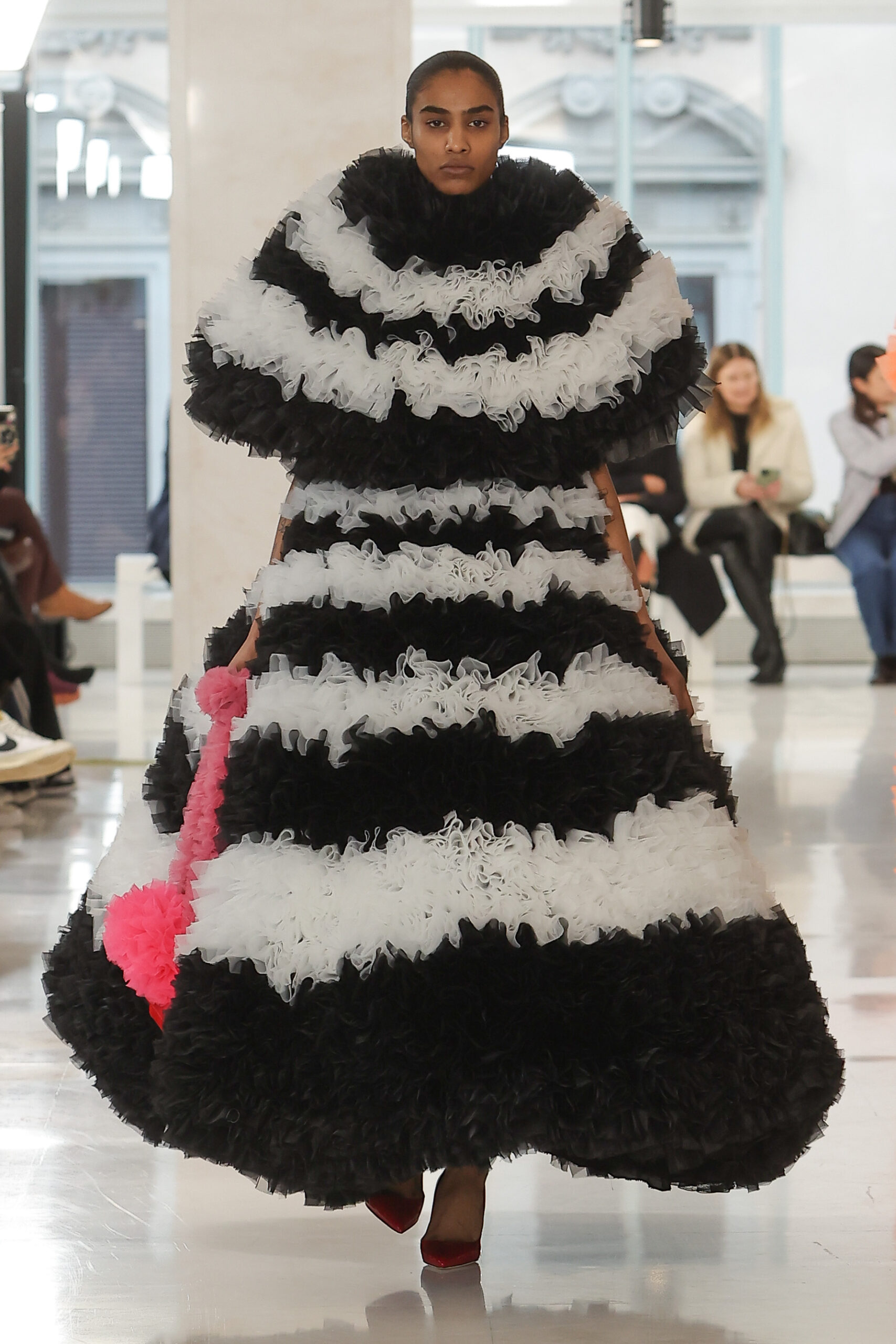
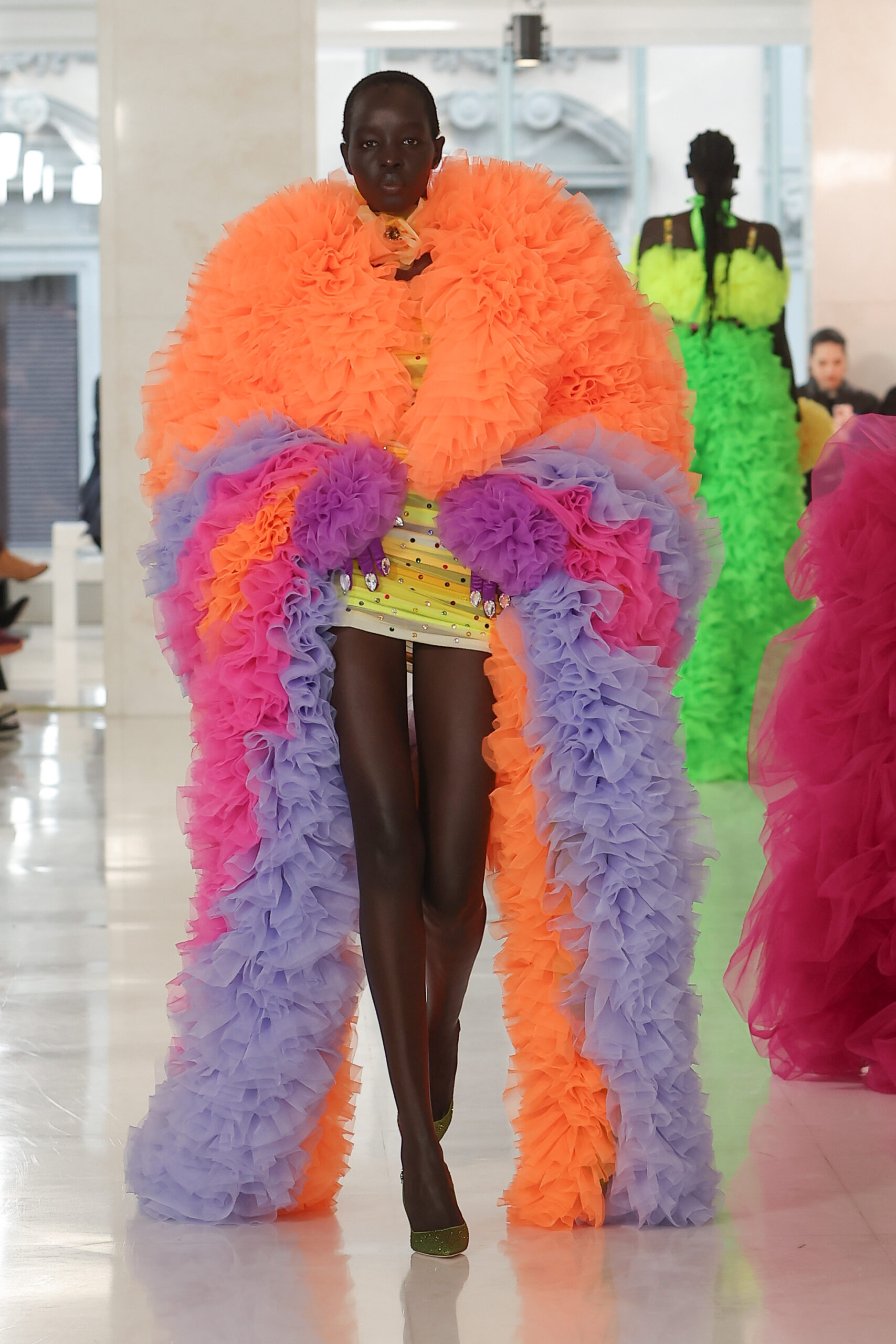 Koizumi’s Autumn/Winter 2023-24 collection made its debut at the Milan Fashion Week, with a fashion show supported by Domenico Dolce and Stefano Gabbana. After Sohee Park and Matty Bovan, Koizumi is the third young artist to catch the Italian fashion duo’s attention and be featured in their program to support emerging talents. Koizumi, who first presented his label at the New York Fashion Week in 2019, is known for his study of volumes, vivid color choices, and the unconventionality of his market. Most of his pieces, in fact, can only be seen on display at the Metropolitan Museum of Art, the National Gallery of Victoria in Australia, or the Kyoto Costume Institute, or exhibited in private collections.
Koizumi’s Autumn/Winter 2023-24 collection made its debut at the Milan Fashion Week, with a fashion show supported by Domenico Dolce and Stefano Gabbana. After Sohee Park and Matty Bovan, Koizumi is the third young artist to catch the Italian fashion duo’s attention and be featured in their program to support emerging talents. Koizumi, who first presented his label at the New York Fashion Week in 2019, is known for his study of volumes, vivid color choices, and the unconventionality of his market. Most of his pieces, in fact, can only be seen on display at the Metropolitan Museum of Art, the National Gallery of Victoria in Australia, or the Kyoto Costume Institute, or exhibited in private collections.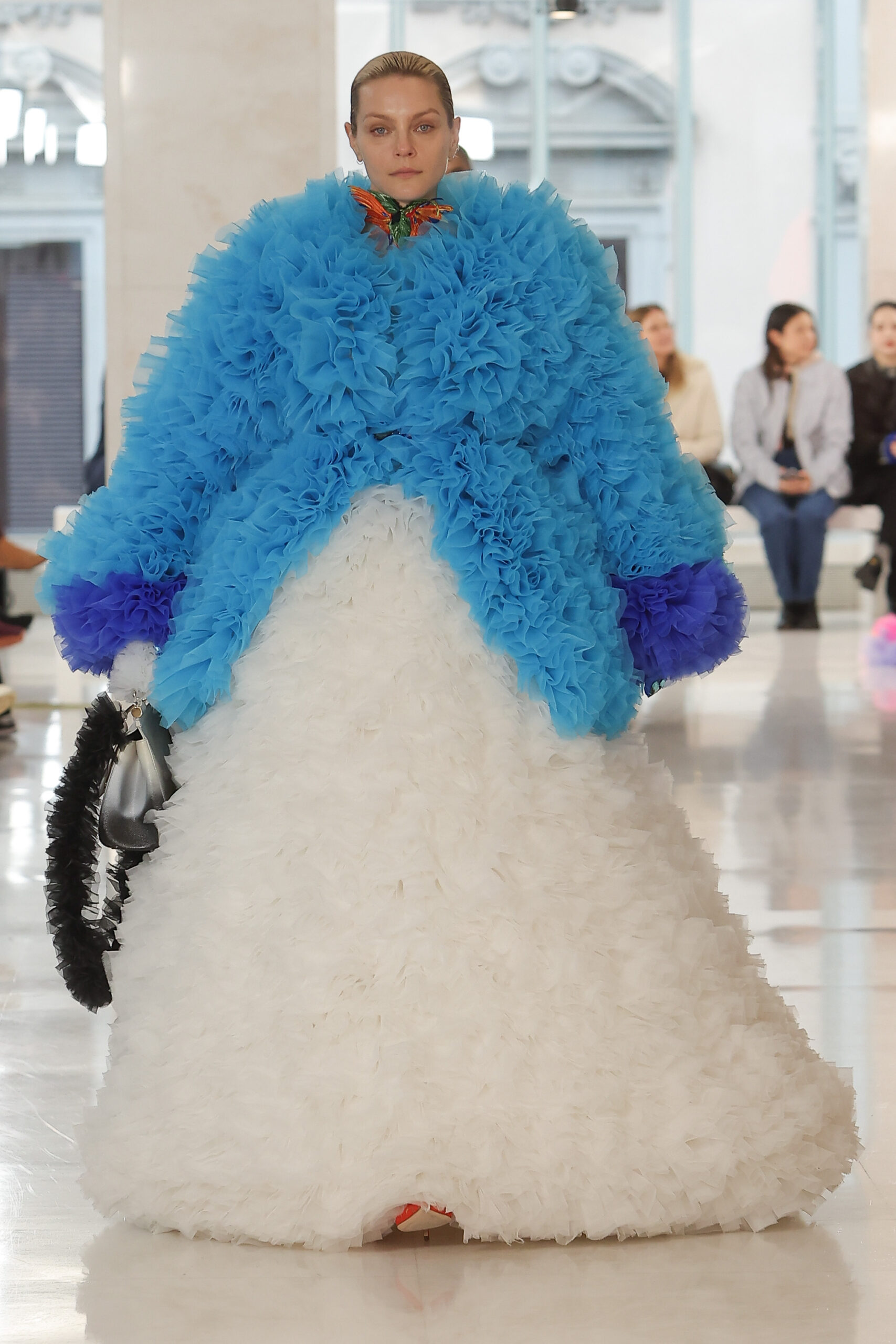
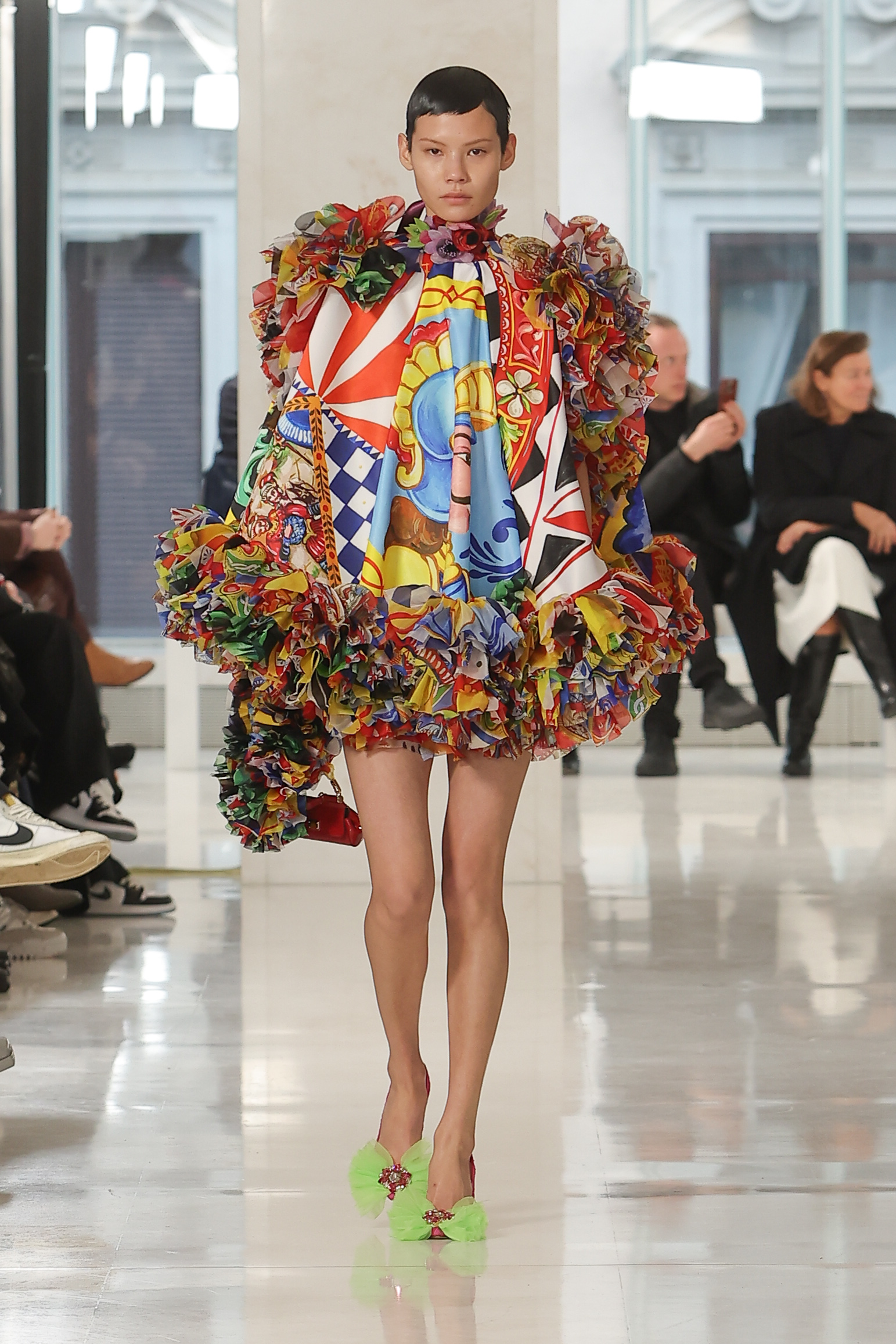
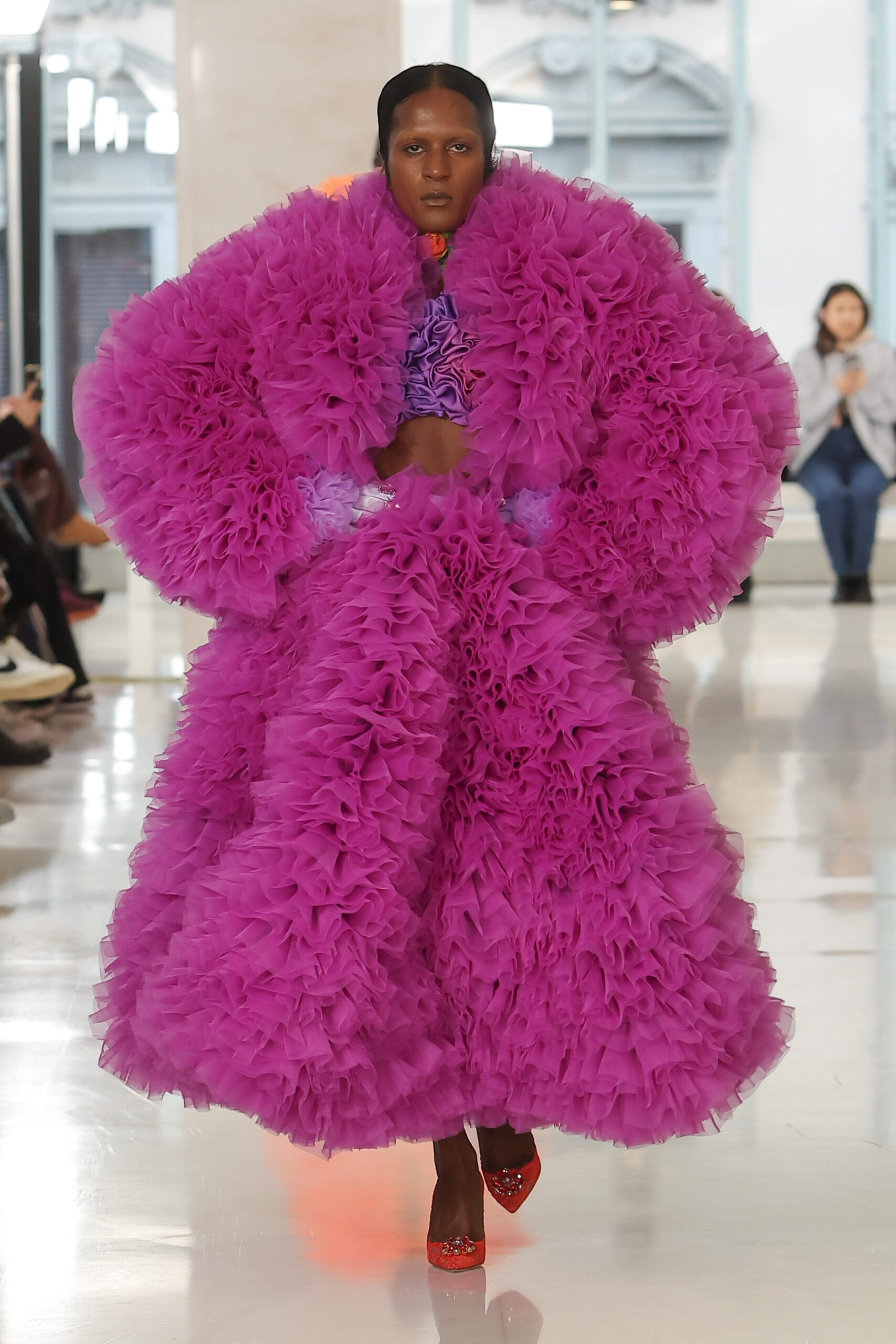 The Milan fashion show carried just that same unique approach. Traditional pieces of the Dolce&Gabbana archives, such as corsets and black dresses, were reexamined through an explosion of fabric, and sartorial details became a tool to celebrate craftsmanship. Koizumi also adopted elements that have forged Dolce&Gabbana’s identity, such as flowers. What better way to show his appreciation to the two designers than a collection of floral bouquets? “Don’t forget to bring flowers,” Koizumi said at the beginning of the show as a reminder of the purpose of his looks: a parade of gratitude.
The Milan fashion show carried just that same unique approach. Traditional pieces of the Dolce&Gabbana archives, such as corsets and black dresses, were reexamined through an explosion of fabric, and sartorial details became a tool to celebrate craftsmanship. Koizumi also adopted elements that have forged Dolce&Gabbana’s identity, such as flowers. What better way to show his appreciation to the two designers than a collection of floral bouquets? “Don’t forget to bring flowers,” Koizumi said at the beginning of the show as a reminder of the purpose of his looks: a parade of gratitude.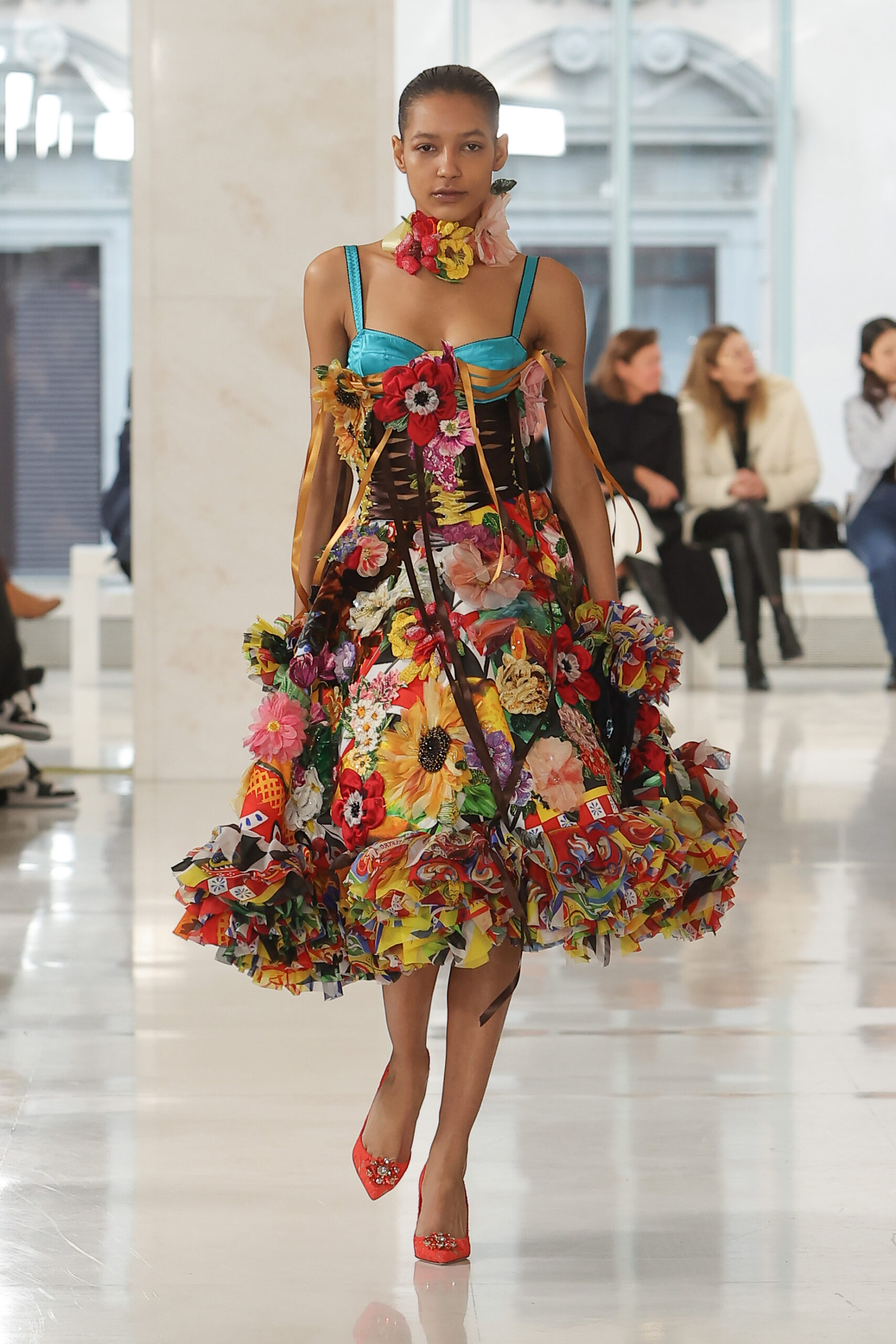
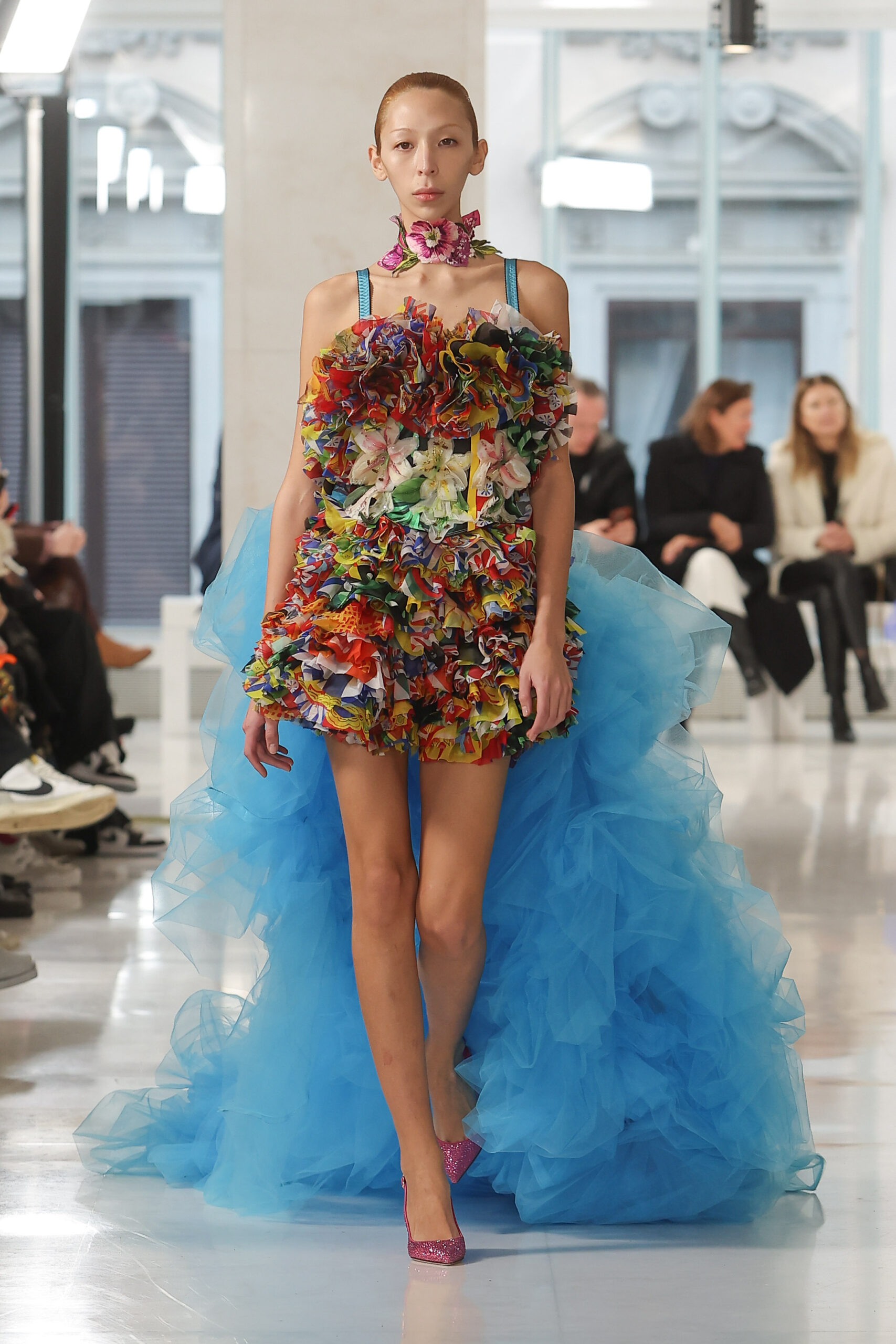
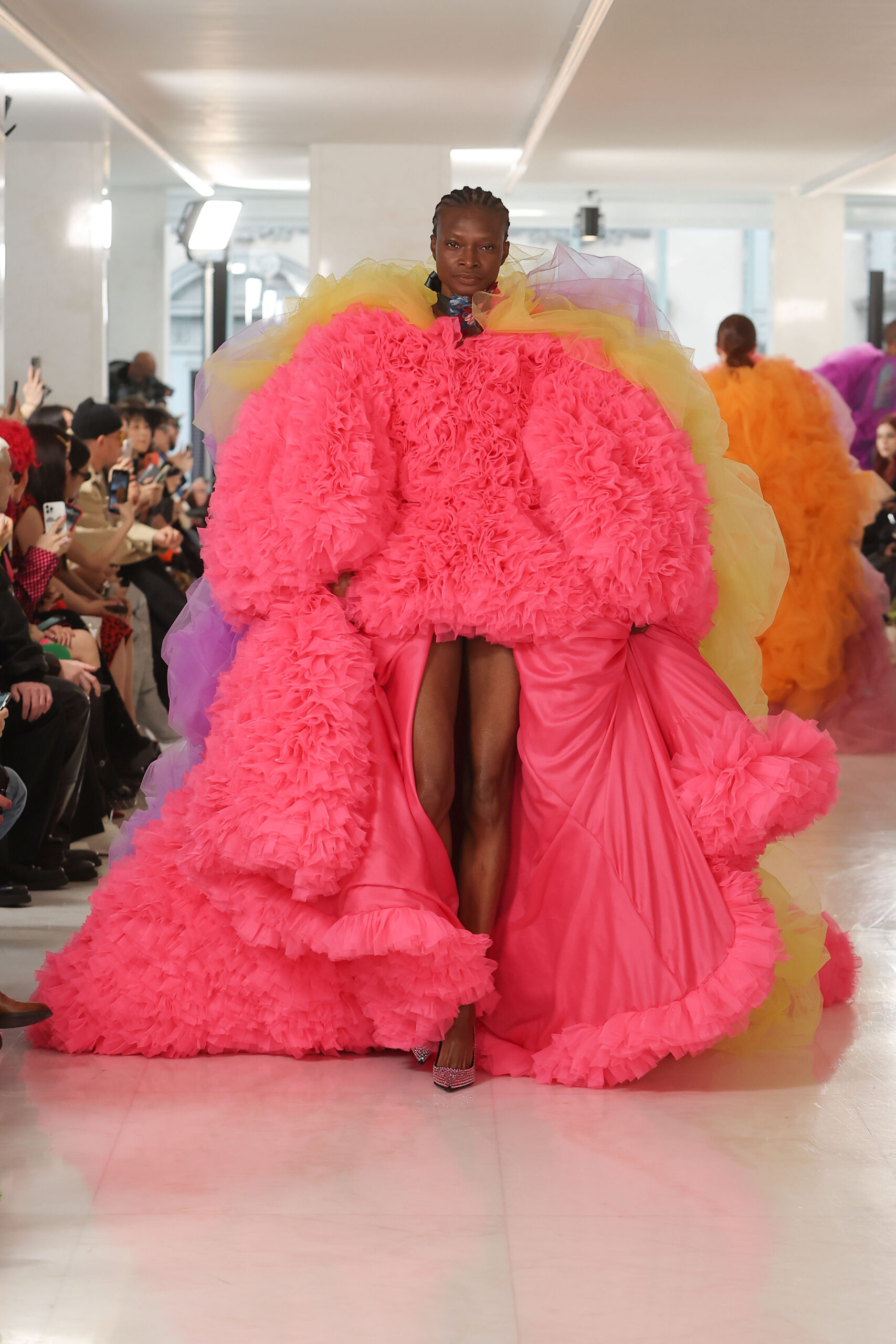 Perhaps the most extraordinary element that Koizumi brought to the runway was the sense of playfulness that seemed to be intrinsic to his collection. Audience members interacted with the voluminous pieces with joy and surprise, in a reaction that resembled that of a play or musical, rather than a fashion show. To capture the theatrics of the collection, there were its two final pieces: a model, wrapped up in a bash of colors, opened up her arms to the photographers as a performer does before the final bow; and a group of five models ended the show in a monumental rainbow flag (which the audience responded to with roaring applauses).
Perhaps the most extraordinary element that Koizumi brought to the runway was the sense of playfulness that seemed to be intrinsic to his collection. Audience members interacted with the voluminous pieces with joy and surprise, in a reaction that resembled that of a play or musical, rather than a fashion show. To capture the theatrics of the collection, there were its two final pieces: a model, wrapped up in a bash of colors, opened up her arms to the photographers as a performer does before the final bow; and a group of five models ended the show in a monumental rainbow flag (which the audience responded to with roaring applauses).

Finally, the ultimate innovation is Koizumi’s idea of feminine seduction and body positivity – themes that had been recurring throughout his artistic career. The designer distanced himself from the poisonous pattern of fashion to glorify only a handful of bodies and drew our attention to the cheerfulness of dressing up. No matter our shape and color, Koizumi might have just taught us to favor the way clothes make us feel rather than look. They say laughter and delight can help you live a longer life – is fashion finally reviewing its priorities?